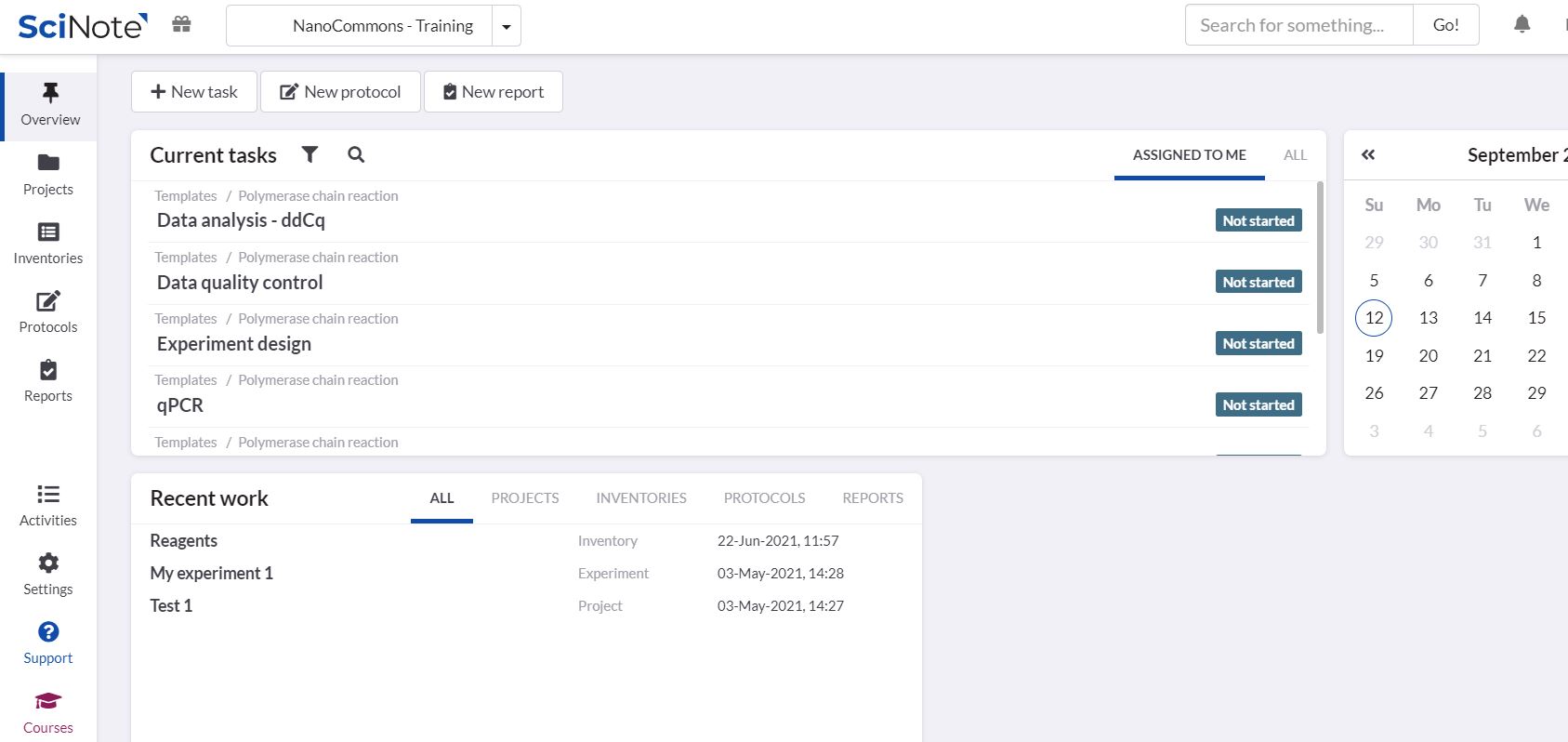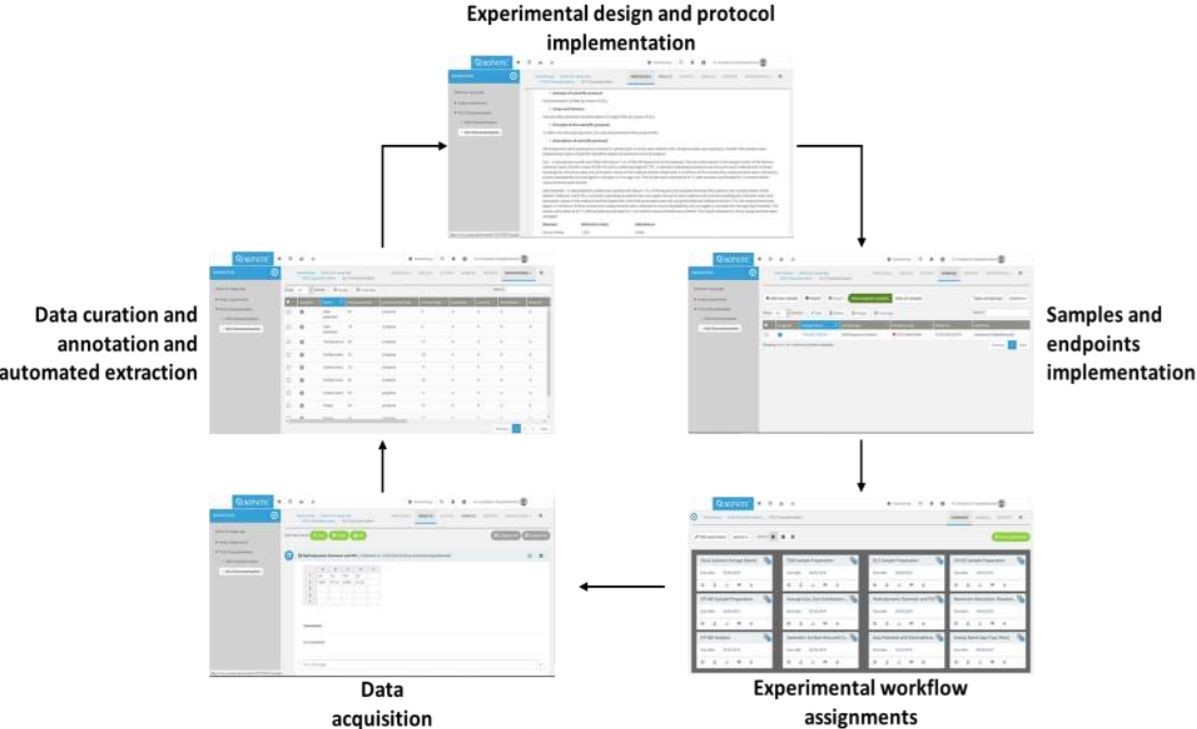Documenting your work with electronic lab notebooks
Electronic lab notebooks (ELNs) help to document experimental and nanoinformatics work in the form of study design, protocols and data directly in electronic form. Therefore, they form an important part of data management by facilitating data input but also the use of additional information on the performed work as metadata accompanying the data.
Introduction of the use of ELNs in NanoCommons
Capturing study design, protocols, data and metadata as they are developed and produced will save substantial time and resources, while resulting in higher quality and reproducible science. ELNs have been develop to guide these collection and reporting workflows and provide the information already in a digital form usable for in-house and public data management and sharing. They can be implemented, through cloud services or locally, into everyday experimental practice streamlining and simplifying experimental and computational workflows, practices and data capturing.
If you want to hear the many reasons why ELNs should replace hand-written notebooks, watch this:
And if you are still not convinced, watch the presentation given as part of the Jaqpot hackathon (3 June, 2020)
What is the role of electronic lab notebooks in data management?
or read more on their use in the
Using the SciNote ELN for nanosafety research
NanoCommons and SciNote
 NanoCommons is running a SciNote instance for training and testing purpose offering full functionality of the premium version. Sign up and use the instance to see its features. Deployment into individual institutions of this open-source version is possible but without further support.
NanoCommons is running a SciNote instance for training and testing purpose offering full functionality of the premium version. Sign up and use the instance to see its features. Deployment into individual institutions of this open-source version is possible but without further support.
NanoCommons SciNote instance signup
Commercial support is provided directly by SciNote with internal and external hosting options (please contact SciNote directly).
NanoCommons ELN training and hackathon
Besides the more general material presented below, trainings on the use of the SciNote ELN in nanosafety are available as recordings (given on 13 and 27 January 2022). They show how to set up experiments, protocols, material descriptions and workflow combining all these using SciNote. It started with an introduction to the Scinote inventory and continues with hands-on instructions on how to manage, modify, create, and import protocols for assays. Tasks can be defined and assigned to different users and/or groups. Finally, the importance of ELNs as part of the data management to achieve data FAIRness is highlighted.
Electronic Lab Notebooks – Live Demonstration
Electronic Lab Notebooks – Getting Hands On
Slides and other supporting material
And some interesting things from an earlier webinar (14 July 2020).
Integrating ELNs into your research
SciNote setup using one of the plans provided directly by SciNote
Slides and additional material available on Zenodo
